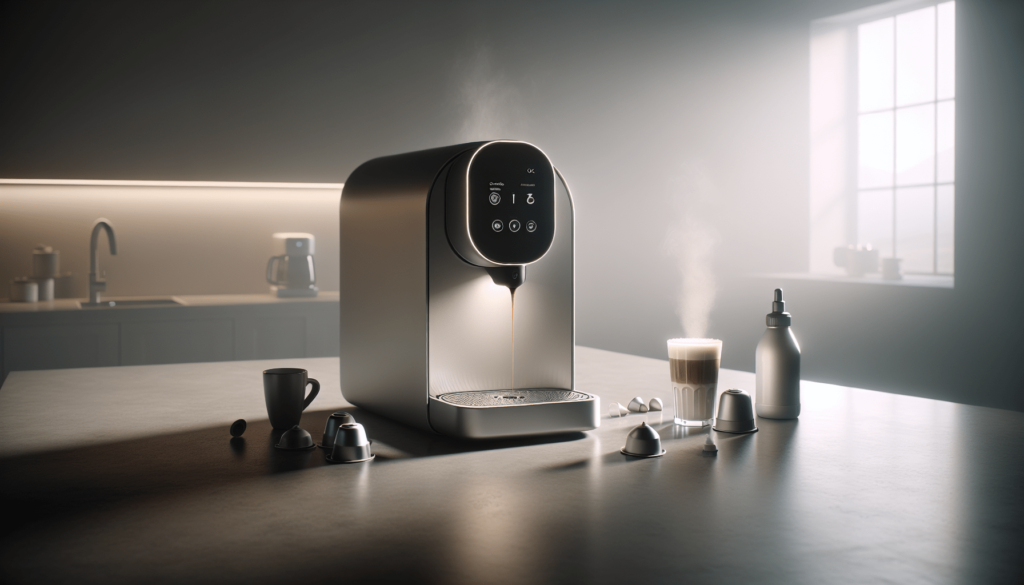Have you ever wondered how long your Keurig can go without descaling? If you’re a fan of that quick and convenient cup of coffee, maintaining your Keurig machine should be high on your priority list. Descaling is a key aspect of that maintenance, ensuring that your Keurig continues to brew coffee that tastes fresh and delicious. In this article, we’ll explore the ideal timeframe for Keurig descaling and why it’s essential for the longevity and performance of your machine.

Why Descaling Your Keurig is Crucial
Descaling is the process of removing mineral buildup, also known as limescale, from your coffee machine. Over time, minerals from the water you use—such as calcium and magnesium—can accumulate inside your Keurig. This buildup can clog the inner components, reducing efficiency and potentially leading to malfunctions.
Impact on Taste and Quality
Mineral buildup doesn’t just affect the internal workings of your Keurig; it can also impact the taste and quality of your coffee. If your machine is overdue for descaling, you might notice that your coffee tastes off or has a weird aftertaste.
Machine Longevity
Regular descaling ensures that your Keurig operates at peak performance for a longer period. Ignoring this maintenance task can lead to costly repairs or even the need for a new machine altogether.
How Often Should You Descale Your Keurig?
The ideal timeframe for descaling your Keurig largely depends on how frequently you use it and the quality of water you’re using. Keurig recommends descaling every three to six months, but this can vary.
Usage Frequency
If you use your Keurig daily, you might need to descale it more frequently—say, every three months. On the other hand, if you use it occasionally, every six months might suffice.
Water Quality and Mineral Content
Using hard water, which contains more minerals, means you’ll need to descale your machine more frequently. If you’re not sure whether you have hard water, you can test it using water hardness strips or check with your local water supplier.
Here’s a simple table to help you determine how often to descale your Keurig based on usage and water quality:
| Usage | Water Quality | Descale Frequency |
|---|---|---|
| Daily | Hard | Every 3 months |
| Daily | Soft | Every 4-5 months |
| Occasional | Hard | Every 4-5 months |
| Occasional | Soft | Every 6 months |

Signs Your Keurig Needs Descaling
While following a recommended descaling schedule is a good practice, sometimes your machine will give you signals that it desperately needs to be descaled.
Slow Brewing
If your Keurig takes longer than usual to brew a cup of coffee, it could be a sign of mineral buildup.
Poor Taste
A noticeable dip in the taste quality of your coffee is another indication that descaling is overdue.
Indicator Light
Many Keurig models come with an indicator light that alerts you when it’s time to descale. Always keep an eye out for this signal.
Steps to Descale Your Keurig
Once you’ve identified the need to descale your Keurig, the next step is to go through the descaling process, which is straightforward and can be done with a few simple steps.
Gather Your Materials
Before you start, you’ll need a descaling solution or white vinegar, a large ceramic mug, and fresh water.
Empty and Clean the Reservoir
Remove any remaining water from the water reservoir. Wash the reservoir with warm, soapy water to get rid of any loose minerals.
Fill the Reservoir
Fill the reservoir with the descaling solution or a mixture of half white vinegar and half water.
Run a Brew Cycle
Place the large ceramic mug under the coffee spout. Run a brew cycle without inserting a K-cup. Discard the contents of the mug. Repeat this process until the reservoir is empty.
Rinse and Repeat
Fill the reservoir with fresh water and run multiple brew cycles to flush out any leftover descaling solution or vinegar. Keep doing this until you no longer detect any descaling solution in the brewed water.
Preventive Measures
While descaling is essential, there are several preventive measures you can take to minimize mineral buildup.
Use Filtered Water
Using filtered or bottled water can significantly reduce the amount of mineral content in the water, thereby reducing the frequency at which you need to descale.
Regular Cleaning
Regularly cleaning the removable parts of your Keurig, including the water reservoir, drip tray, and K-cup holder, can prevent buildup and extend the time between descalings.
Water Filters
Many Keurig models offer optional water filters designed to reduce mineral deposits. If your machine supports this feature, it might be a good investment.
Final Thoughts
Keeping your Keurig in top working condition requires some effort, but the payoff is worth it. Regular descaling, combined with preventive measures, ensures that your machine will serve you well for many years. Plus, you’ll continue to enjoy coffee that tastes just as good as the first cup from a brand-new machine.
By paying attention to the signs your machine gives you and following the recommended descaling schedule, you can keep enjoying your coffee without any hiccups. So, next time you’re brewing that perfect cup, you’ll know exactly when and how to keep your Keurig in peak condition. Cheers to great coffee, every day!
